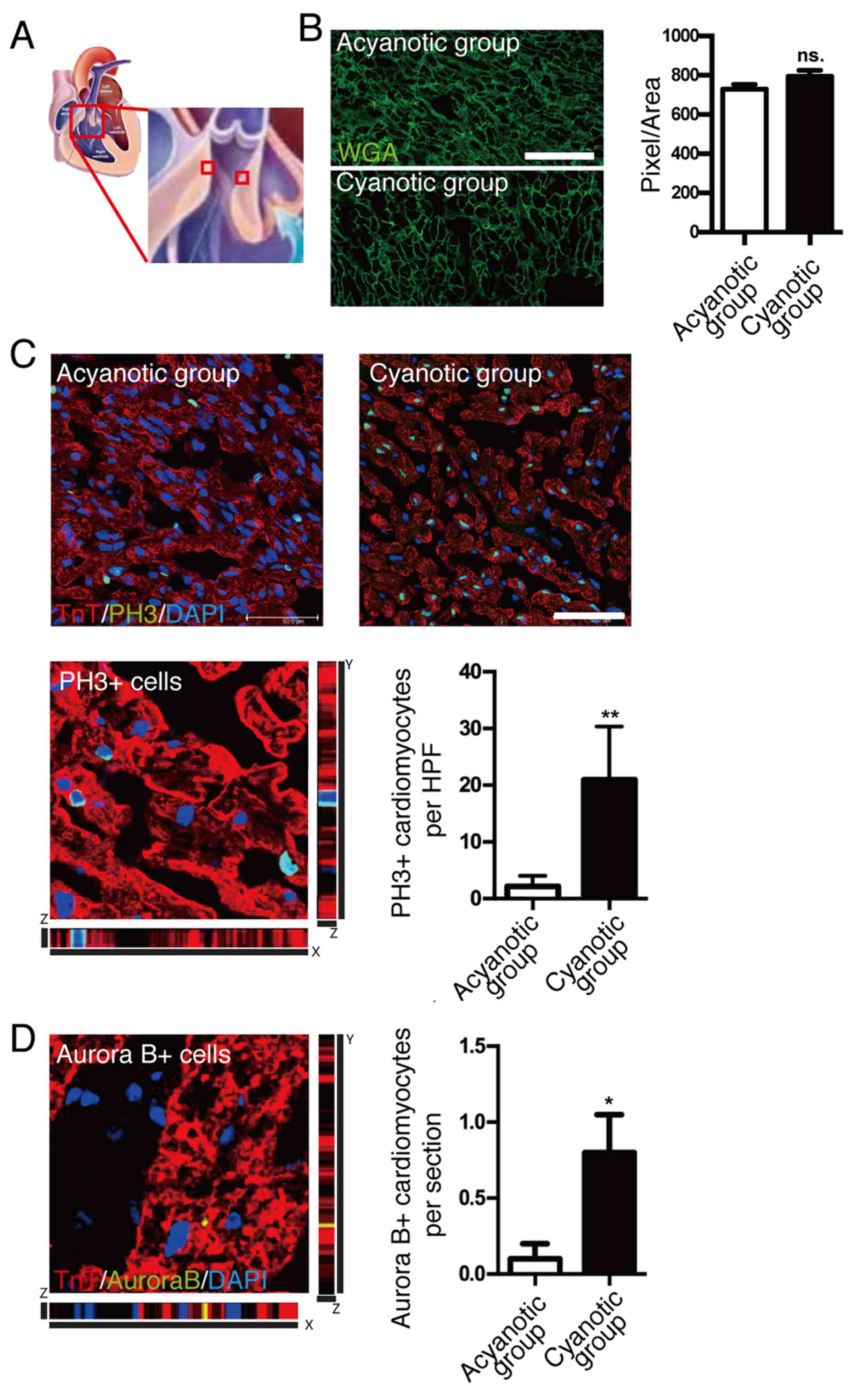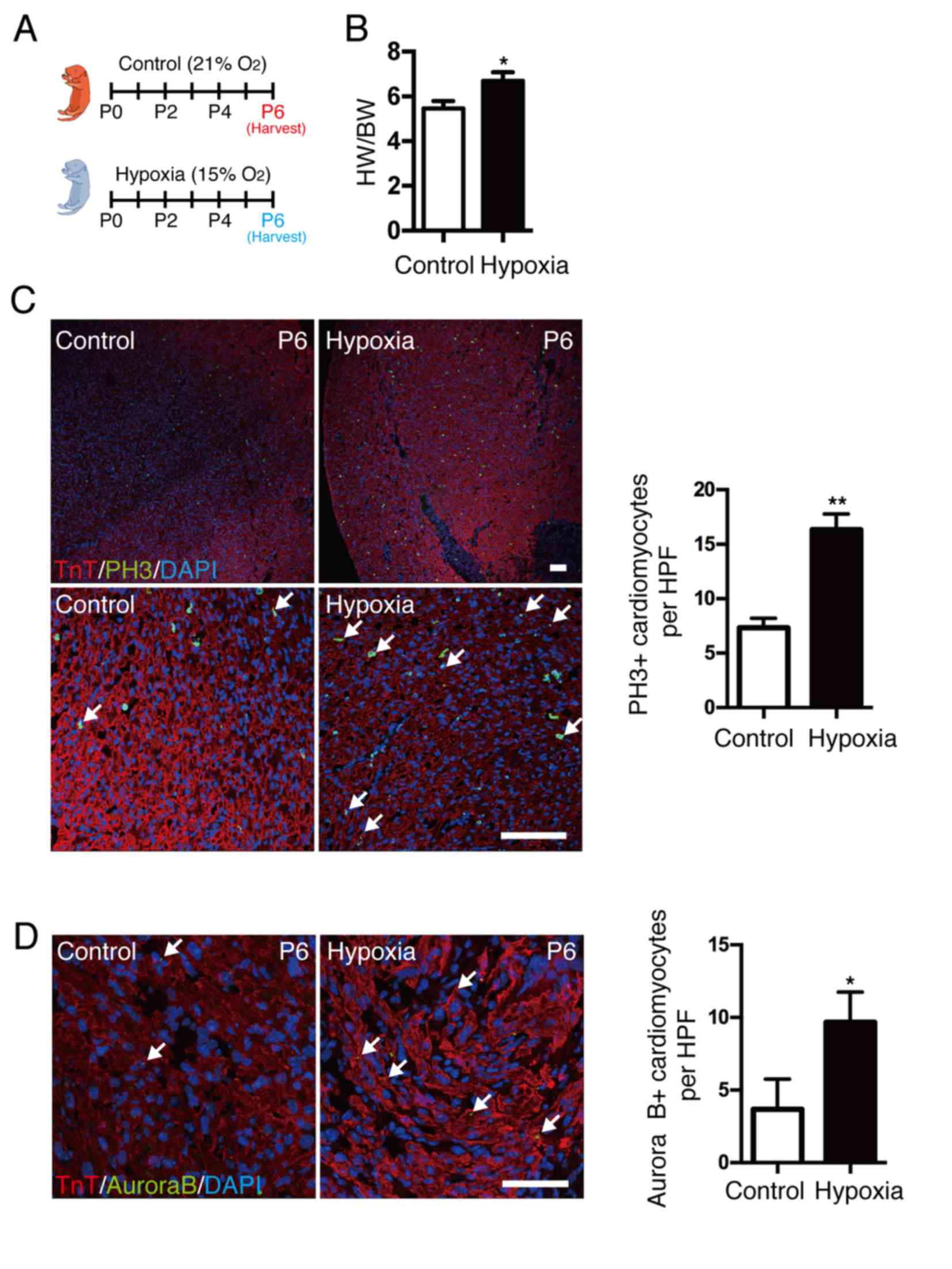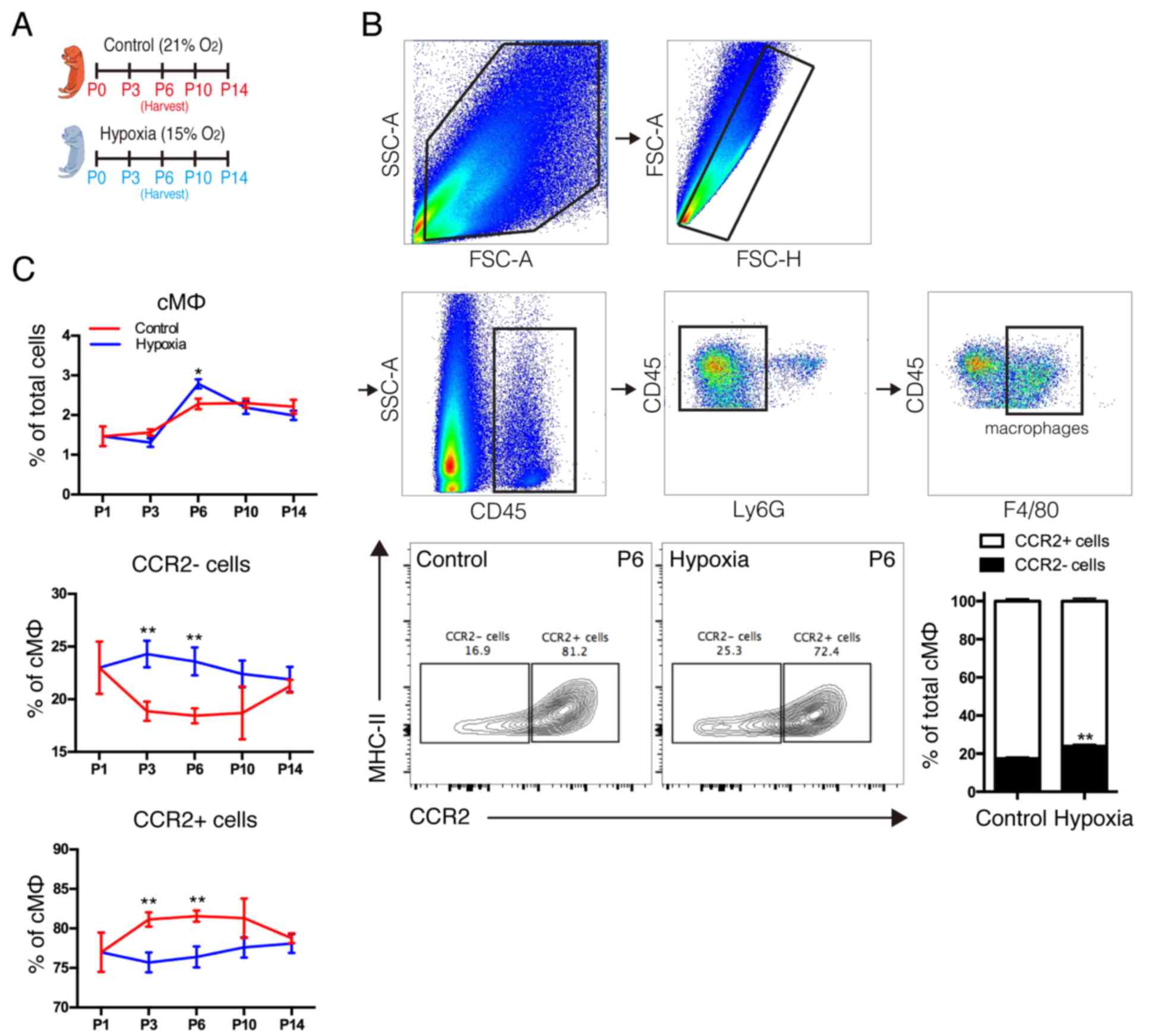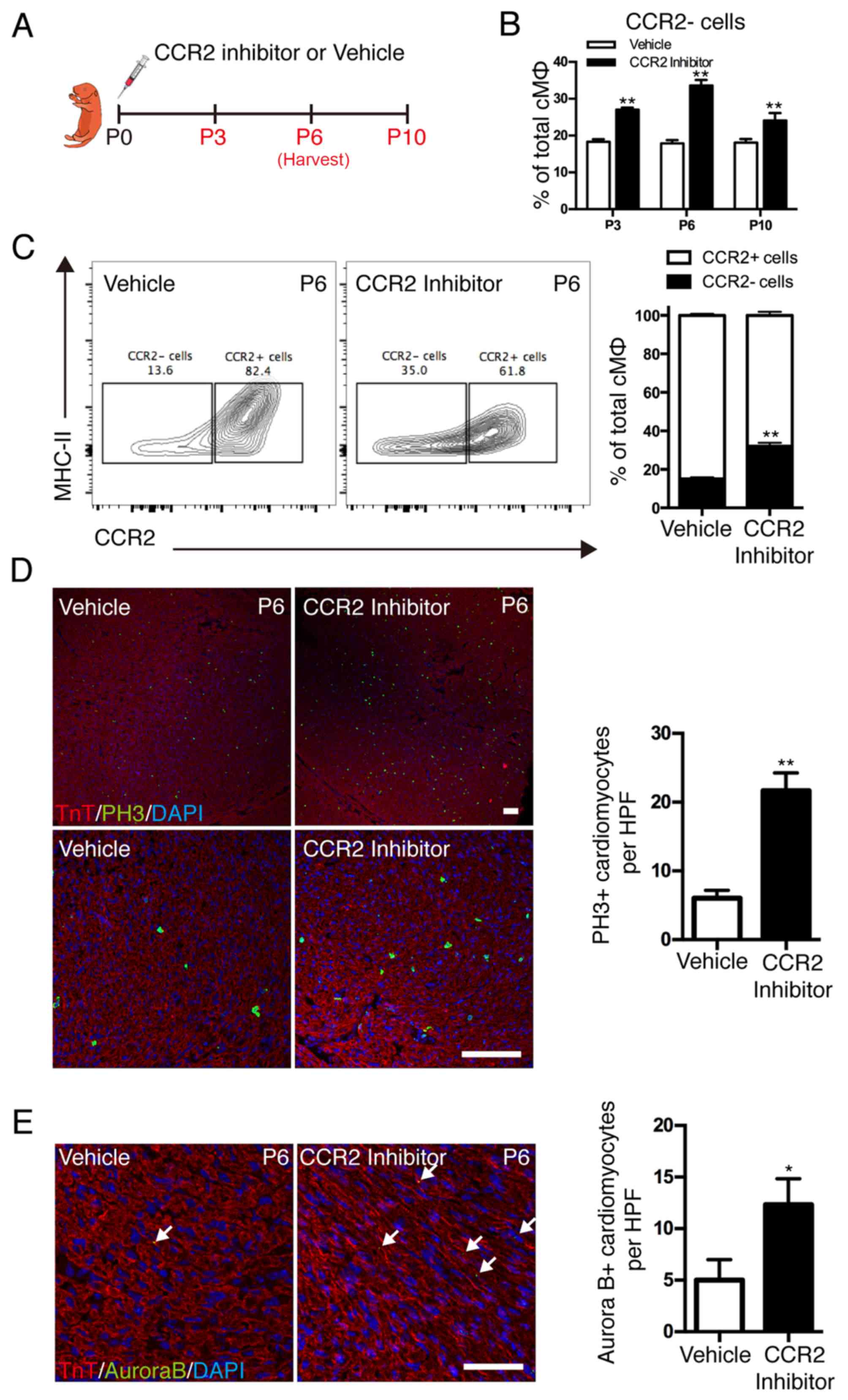Cardiac resident macrophages are involved in hypoxia‑induced postnatal cardiomyocyte proliferation
- Authors:
- Published online on: April 4, 2017 https://doi.org/10.3892/mmr.2017.6432
- Pages: 3541-3548
-
Copyright: © Liu et al. This is an open access article distributed under the terms of Creative Commons Attribution License.
Metrics:
Total
Views: 0 (Spandidos Publications: | PMC Statistics:
)
Total PDF Downloads: 0 (Spandidos Publications: | PMC Statistics:
)
Abstract
Induction of cardiomyocyte proliferation, the most promising approach to reverse myocardial attrition, has been gaining importance as a therapy for cardiovascular disease. Hypoxia and macrophages were previously independently reported to promote cardiomyocyte proliferation in mice. However, whether hypoxia promotes cardiomyocyte proliferation in humans, and the association between hypoxia and macrophages in cardiomyocyte proliferation, have not to the best of our knowledge been previously investigated. The present study investigated the cardiomyocyte proliferation in 22 acyanotic and 29 cyanotic patients. Cardiomyocyte proliferation in a hypoxic mouse model (15% O2) was subsequently performed and the macrophage subsets were analyzed. A C‑C chemokine receptor type 2 (CCR2) inhibitor was used to increase the number of resident macrophages in order to investigate the effect of macrophages on cardiomyocyte proliferation. The results demonstrated that cardiomyocyte proliferation in the cyanotic infant group was significantly increased compared with the acyanotic infant group and the hypoxia‑treated C57BL/6J neonates confirmed the hypoxia‑induced cardiomyocyte proliferation. However, hypoxia did not induce the proliferation of isolated cardiomyocytes. Notably, hypoxia treatment increased the number of cardiac resident macrophages in neonate hearts. Furthermore, increasing the number of resident macrophages significantly enhanced cardiomyocyte proliferation. In conclusion, postnatal hypoxia promoted cardiomyocyte proliferation in humans and animals, and cardiac resident macrophages may be involved in this process. Therefore, this novel mechanism may provide a promising strategy for cardiovascular disease treatment.















